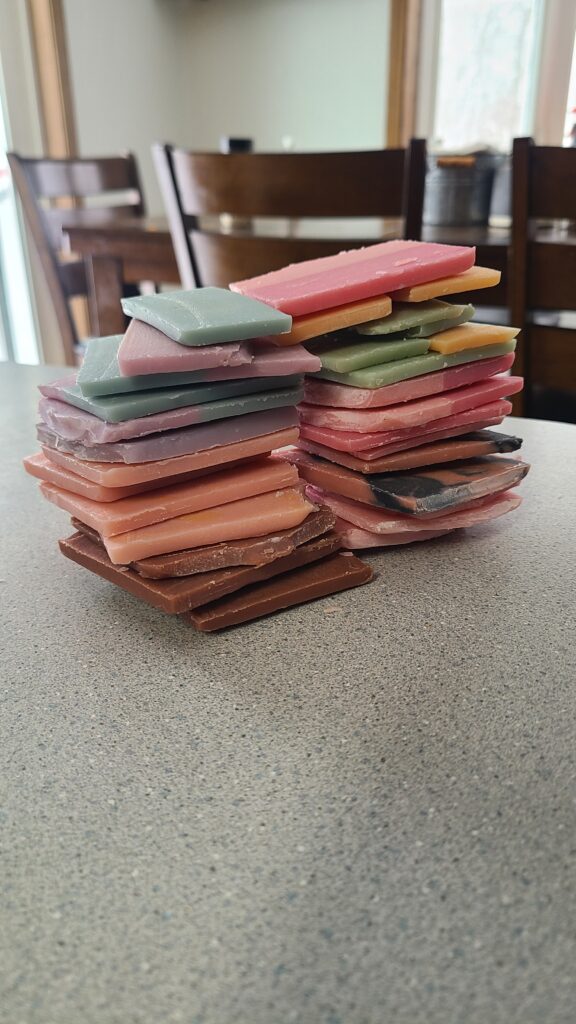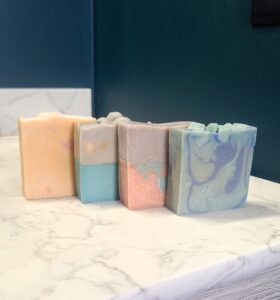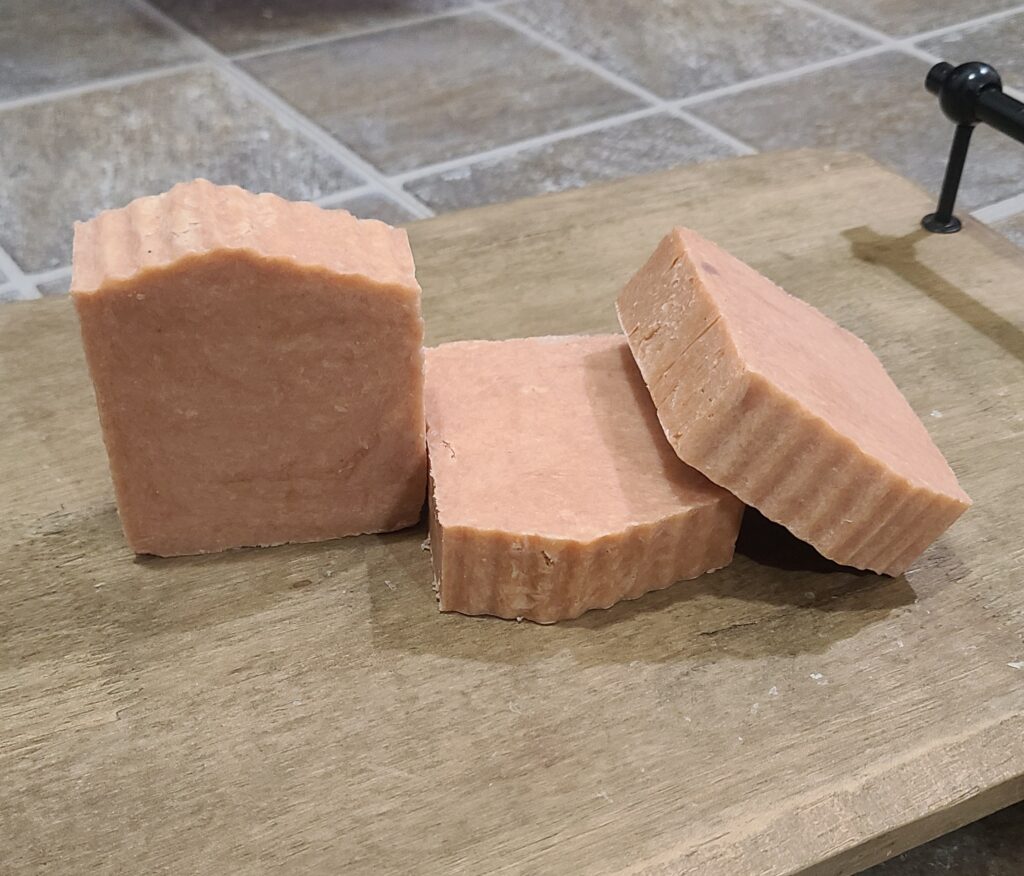Don’t throw out your soap ends or slivers of old soap, there are ways to reuse them! Here are three creative ways that you can repurpose soaps scraps. Do your part to reduce waste and use what you already have on hand.

This post contains affiliate links. As an Amazon Associate, I earn from qualifying purchases.
One of the many things that I love about homemade bar soap is that it never has to be wasted or thrown out!
I can reuse and repurpose the smallest scrap, crookedly cut bar, or an entire batch that didn’t turn out as expected. There are three different options I have for giving old soap new life, let me tell you about them!
What is a soap scrap?
I make cold process soap with goat’s milk and use large rectangular loaf molds. When I cut the loaf into bars, there is always a little end piece left over. This is one example of a soap scrap.
Sometimes I choose to scrap a whole bar of soap. If I don’t use my multi-wire soap cutter and the bar is too uneven, I drop it on the ground denting and deforming it before its cured, or it is below the weight I have set for selling my soap, it goes in the personal use or recycle pile.
There are also times that I have scrapped entire batches of soap. The saponification process is hard on some colorants and essential or fragrance oils. What looks or smells like nice soap during the process of making it, doesn’t always end up being the case. I have scrapped batches because they turned out brown instead of being colorful, the fragrance didn’t hold, or the scent was unappealing.
1. Use Soap Scraps in a Soap-saver Bag
This is the easiest way to use up small soap scraps from cutting soap or when you use a bar until all that is left is a tiny sliver.
All you have to do is collect the scraps and put them together in a soap-saver bag and then use it to wash with. The bag keeps the pieces from falling out and allows the soap to be used up completely. To learn more reasons why using a soap-saver bag is beneficial, click here to read my related article.
2. Use Soap Scraps to Make Mosaic Soap
Both small and large soap scraps can be used to make new soap that has a mosaic pattern. The soap scraps just have to be chunked up into little pieces and then embedded in new soap batter at the time of pouring.
I use a knife to cut the soap scraps (the pieces don’t have to be all the same size or shape). They can be added to the batter and mixed in, arranged between layers, or used to make a textured top for the new soap loaf… the possibilities are endless!
You can go with complementary colors to maintain a theme or use contrasting colors for a pop of visual appeal. I personally love how mosaic soap looks, every bar will be unique and a work of art!

3. Use Soap Scraps to Rebatch
You can use a rebatching method to change old cold process soap into something new. I take a scrapped batch or a bunch of bars or small pieces and grate them with a cheese grater into the slow cooker I have devoted to this purpose. Once the pieces have melted down, I add some distilled water to make it pourable and then add colorants and new fragrance to complete the transformation. For a step-by-step guide to rebatching, click here to read my article.
Rebatched soap is described as more rustic in appearance. It is difficult to make it very smooth or do any kind of swirling patterns, but it is still good soap. The nice thing is that rebatched soap is ready to use sooner than regular cold process soap (which requires a 4-6 week cure time). Rebatched soap isn’t undergoing a chemical change after pouring, saponification already happened when it was first made, allowing 2 weeks for the added water to evaporate will leave you with a solid, long-lasting recycled bar.
For a full tutorial on rebatching cold process soap, click here to read my other article!

Now you know one of the ways that we make sure our farm operations stay congruent with our mission and values of conservation, stewardship, and resourcefulness. Share your reuse or recycling ideas with us in the comments below!

Mother, farmer, author, and teacher by trade… She loves tending to things and watching them grow!
